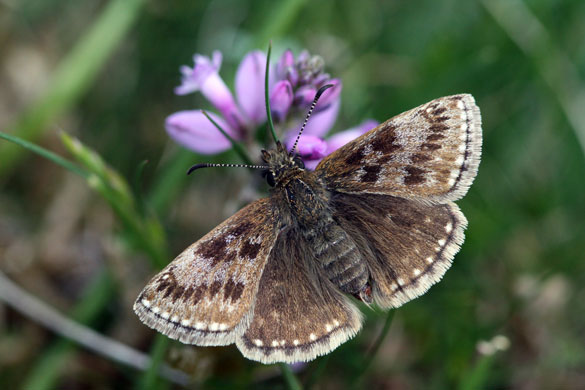TOP STORIES Getting People to Coexist with Cats
Getting People to Coexist with Cats
Time - www.time.com
03 Apr 2009
B Walsh
Photo credit: Tom Brakefield / Corbis
Area: Pantanal, Brazil
. . . For Mt. Sinai, which has made global health a priority for its medical students, the Panthera project presents an opportunity to explore another consequence of the increasing proximity of animals and people: zoonotic diseases, which can pass back and forth between wildlife and human beings. Several major human diseases have originated in animals, including Ebola (which began among primates in Africa) and avian influenza (which started in wild and domestic birds in Southeast Asia, but has also infected big cats).
As human beings, wild animals and domestic animals begin to live in closer and closer to one another, the chance of pathogens jumping — and amplifying — between species will only increase.
Wild Ass vulnerable to flu
Times of India - timesofindia.indiatimes.com
09 Apr 2009
Area: Indian Wild Ass Sanctuary, India
An anxious animal husbandry department has been on its toes ever since suspected equine flu struck city police stables and claimed four horses.
Equally concerned is the forest department as Gujarat's pride, the endangered Wild Ass in Rann of Kutch, is very vulnerable to the virus.
In 1962-63, equine flu hit the Wild Ass population, say forest officials. Currently, the number in Gujarat is around 3,900.
Loveland Connection - www.coloradoan.com
07 Apr 200.9
T Hughes
Photo credit: V. Richard Haro/For Loveland Connection
Area: Fort Collins, Colorado
About 25 years ago, there were only 18 known black-footed ferrets living in the wild, on the brink of extension because of disease and widespread loss of habitat.
Today, thanks to the efforts of wildlife biologist Paul Marinari and other federal scientists, there are about 800 black-footed ferrets living in the wild. Marinari runs the U.S. Fish and Wildlife Service's ferret conservation and breeding center north of Fort Collins, where Mandisa lives.
The black-footed ferrets — a different species than the ones kept for pets — are a federally endangered species.
 Dolphins can be made deaf by sonar, scientists find
Dolphins can be made deaf by sonar, scientists findTelegraph - www.telegraph.co.uk
07 Apr 2009
L Gray
Photo credit: Getty
Area: United States
Dolphins suffer temporary hearing loss from Navy sonar, scientists have found, suggesting military activity could be causing the animals to become stranded.
The animals, which communicate using a natural form of "sonar ping", are said to confused and frightened by the much louder man-made noise of military vessels.
However, until now studies have not been carried out into the phenomenon, often because of the difficulty in gaining access to classified information about the movement of military ships and submarines.
Cited Journal Article
>>>Sonar-induced temporary hearing loss in dolphins. Biology Letters. 2009 Apr 08. Epub ahead of print.
Related News
>>>Dead dolphin found in NJ river - Sea Bright, Monmouth County, New Jersey, USA - Map It

 Science Moves to Protect Frogs From Extinction
Science Moves to Protect Frogs From ExtinctionEcoWorldly - ecoworldly.com
06 Apr 2009
D Harcourt
Scientists and veterinarians met in San Diego, in February 2009, to protect amphibian species threatened with extinction by the chytrid fungus.
Chytrid is already associated with declines in amphibian populations in Central America and Australia and is spreading quickly in the wild.
The photograph is of the critically endangered Panamanian golden frog (Atelopus zetecki) which communicates by waving its hands because, unlike other frogs, it has no eardrums.
Related News
>>>First UK ‘stock-take’ for reptiles and amphibians - Your help is needed
OTHER WILDLIFE HEALTH NEWS
Photo credit: Guardian - www.guardian.co.uk
 The UK's 12 butterflies most in decline [photo gallery]
The UK's 12 butterflies most in decline [photo gallery]- In pictures: Underwater photography: marine wildlife off British shores
- Avian influenza found on Kentucky poultry farm
- New regulations for taxidermists [CWD, Michigan]
- Prolonged Texas Drought Impacts Wildlife
- Bahrain Officials Warn Owners of Wild Animals
- 11 Extinct Animals That Have Been Photographed Alive
- 49 species of Indian mammals face danger : IUCN
WILDLIFE HEALTH RELATED PUBLICATIONS
Browse complete Digest publications library here.
Roosting ecology and variation in adaptive and innate immune system function in the Brazilian free-tailed bat (Tadarida brasiliensis)
J Comp Physiol [B]. 2009 Apr;179(3):315-23. Epub 2008 Nov 11
LC Allen et al.
Olfactory system involvement in natural scrapie disease.
J Virol. 2009 Apr;83(8):3657-67. Epub 2009 Jan 21
C Corona et al.
Detection and characterization of avian influenza and other avian paramyxoviruses from wild waterfowl in parts of the southeastern United States
Poult Sci 2009. 88:851-855.
TV Dormitorio et al.





No comments:
Post a Comment